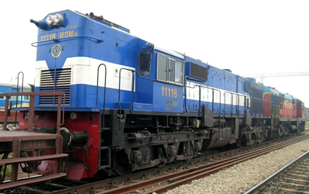Introspecting the Railways Privatization
Several committees including Anil Kakodkar, Sam Pitroda recommended the introduction of private investment in railways to develop a world class railway infrastructure. The dream looks gloomy till a roadmap is not chalked out to proceed. A lesson in case of privatized European railways is a mixed bag of good and bad experience. The privatization of British Railways in 1953, was disastrous with passenger fares zooming to new heights, especially troubling the daily commuters. Also the loss making infrastructure businesses have to be ultimately taken hold by government to revamp it.
Limitations to the Railway Privatization
Unlike the Road transport and airways, privatization of railways is a difficult task. As wide open skies offers unlimited opportunities and road transport provides multi-track path to pass-by. The limitation in case of railways is the sharing of the specific track between the passenger and freight and between public and private carrier if privatized. It also includes sharing associated infrastructure like signaling, stations etc. which is presently owned by government.
Now who gets the priority, the private operator or the owner of the infrastructure i.e. the government? The operations of container trains which are owned by the private players faced such problems in the past. Both the government run CONCOR and private operator have to give precedence to the superfast rails such as Rajdhani and Shatabdi.
USA’s examples in this case gains relevance where the freight load run by the private class is given the precedence over the passenger trains because of ownership of the tracks.
Inevitably the allegations of favored treatment to the state-owned operator are bound to arise. Compensation to the private players in case of heavy losses to carry out the non-viable services would raise the questions prone to judicial scrutiny. The ultimately question rests with the profit making motive of the private players which could be visible in the future rise in the passenger fares. It would be the biggest limitation in the privatization of this sector.
Poorly developed institutional structures in the present context would make the process more complex and difficult to handle. Merely privatizing the railways, separating the policy making functions form the operations at the railway board and setting up of an inter-modular agency as regulator would not be sufficient to bring the basic changes to the quality of the customer services.
Instead in order to improve the efficiency and transparency, improving the infrastructure, in an inevitable privatization of railways require many fundamental changes in the organization.
The regulator as has happened in case of Air India for making the airlines more competitive and efficient, the so called regulator was not only invisible but also twisted for vested interest as was evident from the recent Air India controversy.


